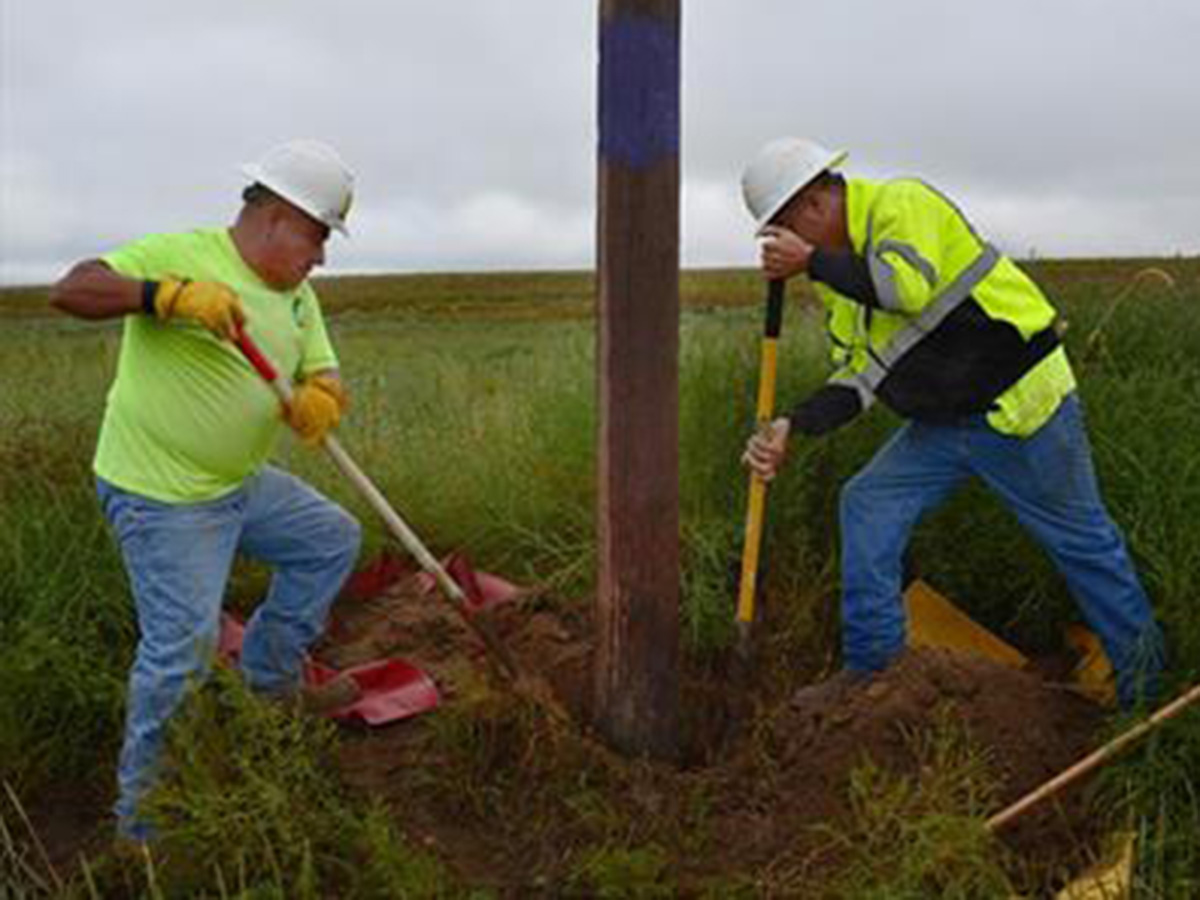Pole Inspections Minimize Storm Damage, Bring Improved Reliability
A series of strong storms packing winds of up to 80 miles per hour blew through the Hays and Great Bend districts on June 21, causing widespread outages that knocked out power to more than 6,400 customers.
Despite the storm’s fury, damage was relatively light - around 60 poles were brought down - and all but a handful of customers were back on by early the next day. A decade ago, the damage likely would have been much more severe, with outages measured in days rather than hours.
“Fewer poles down means fewer outages, and quicker restoration times when we do have outages,” said Fred Taylor, Midwest Energy’s Vice President for Operations.
Part of this improvement is due to pole inspections, which identify the weakest poles in the system, and allow crews to replace those weak poles before they can cause outages. During pole inspections, contract crews dig around the base of the pole to check for damage; they take a core sample to test strength, then treat the base of the pole to prevent rot. 
Midwest began to inspect poles in its distribution system (the shorter poles often found along city streets, along rural roads and in alleyways) in 2005. Through 2010, approximately 11,000 poles had been inspected. At that rate it would have taken about 100 years to inspect the entire distribution system, so the pace was accelerated. An aggressive 12 to 15-year cycle for pole inspections began in 2014. Since then, the company has achieved a 13 to 14-year rotation.
By year-end 2019, Midwest had inspected 60 percent (105,600) of its distribution poles and rejected and replaced nearly 5,000 poles. There are an estimated 75,600 distribution poles
remaining to inspect in this first trip through the system. The rejection rate has been 4.63%, resulting in replacement of about 550 poles annually.
The rural system has been the focus of inspections thus far. The rejection rate will likely increase when more inspections are completed in cities and towns (closer pole spacing in towns allows weaker poles to remain in service longer). The current timeline has the first round of distribution inspections finished in the Great Bend District in 2026, the Colby District in 2027, and the Hays District in 2029.
Transmission pole inspections started their second round in 2012, and are completed in conjunction with the distribution pole inspections. At year-end 2019, just over 21,200 or 66% of the transmission structures had been inspected a second time.
The rejection rate for transmission structures (the large poles that run between cities and substations) during the second round is only 0.63%. The company is rejecting and replacing approximately 17 structures annually through the inspection process. A report for 2006 stated the transmission rejection rate to be 7.5% at that time.